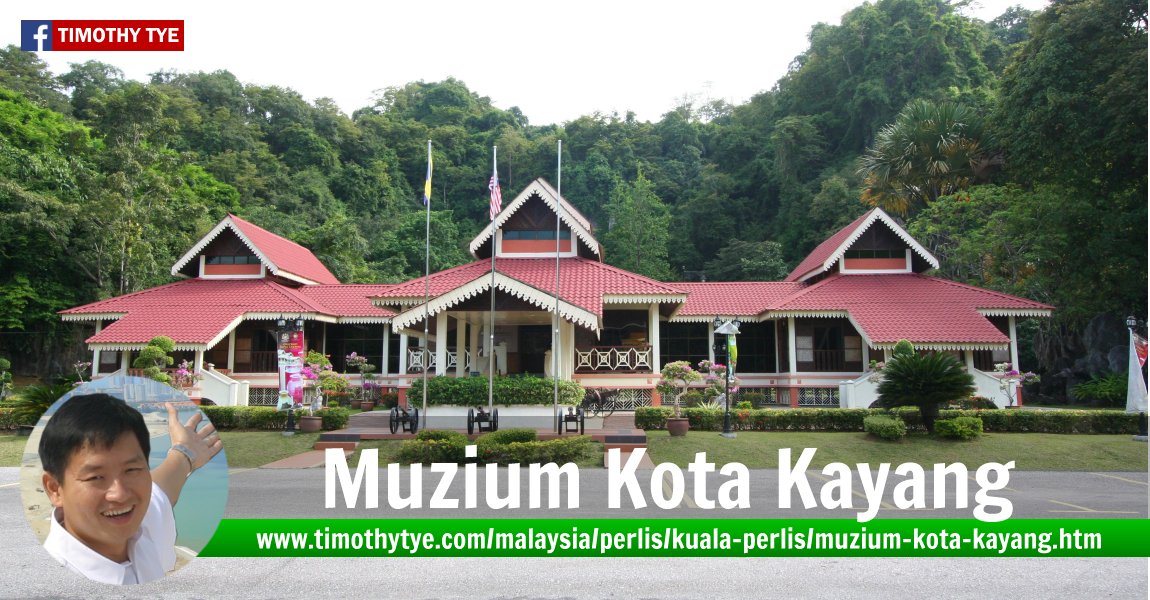 Muzium Kota Kayang, Kuala Perlis (31 October, 2009)
Muzium Kota Kayang, Kuala Perlis (31 October, 2009)
Muzium Kota Kayang (GPS: 6.41574, 100.14875) is a museum in Bukit Kayang, on the outskirts of Kuala Perlis. It is sited in an area rich with history. Within the vicinity of the museum are archaeological excavations revealing human habitation going back to the Neolithic age. Two of the tombs of Kedah sultans are also located nearby.
Muzium Kota Kayang provides a fascinating glimpse into the history of the surrounding area. On display are the prehistoric artefacts that were discovered in the nearby caves of Bukit Kayang. There is now a well-maintained path from the museum to the mouth of the cave itself. According to the museum, Neolithic discoveries have been made at Bukit Tengku, Bukit Chuping and Bukit Ketui, among others.
Visitor Information
Muzium Kota Kayang02000 Kuala Perlis, Perlis.
Phone: 04-977 0027
Email: pr.mkk@jmm.gov.my
Opening Hours: 9:00am to 5:00pm daily.
Entrance fee: Free
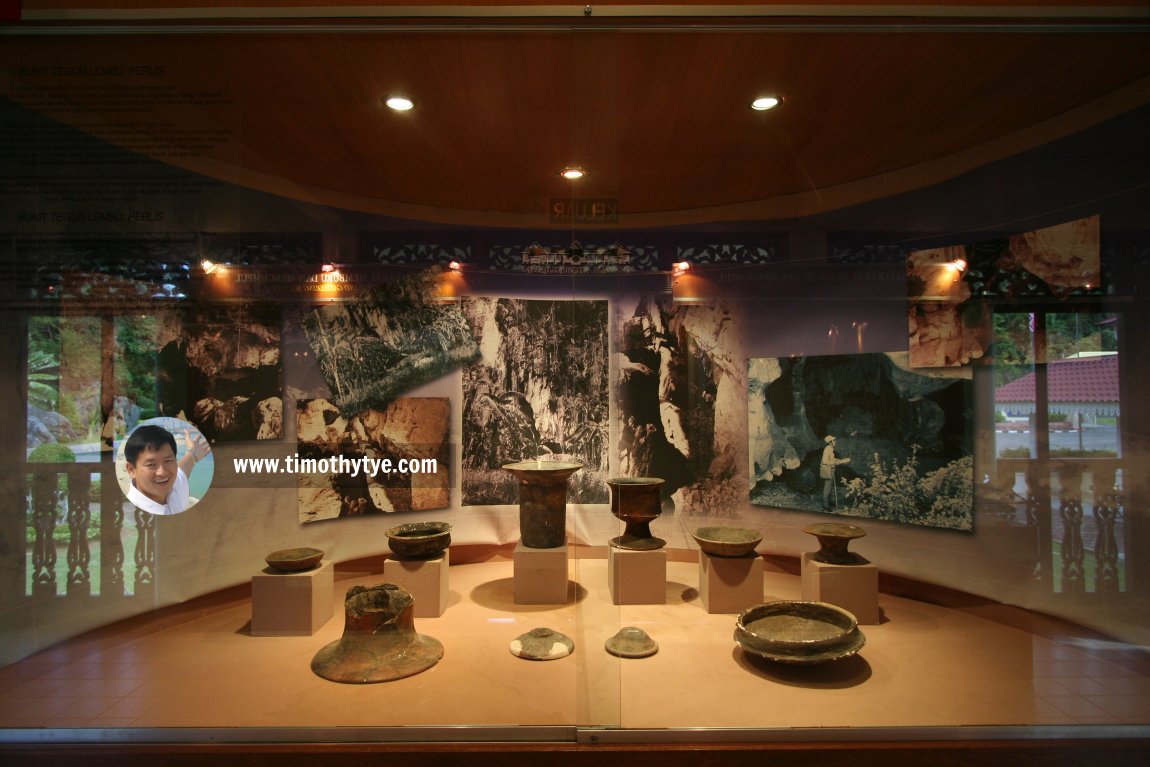 Prehistoric artefacts from Bukit Kayang excavation (31 October, 2009)
Prehistoric artefacts from Bukit Kayang excavation (31 October, 2009)
 Path to the cave at the foot of Bukit Kayang (31 October, 2009)
Path to the cave at the foot of Bukit Kayang (31 October, 2009)
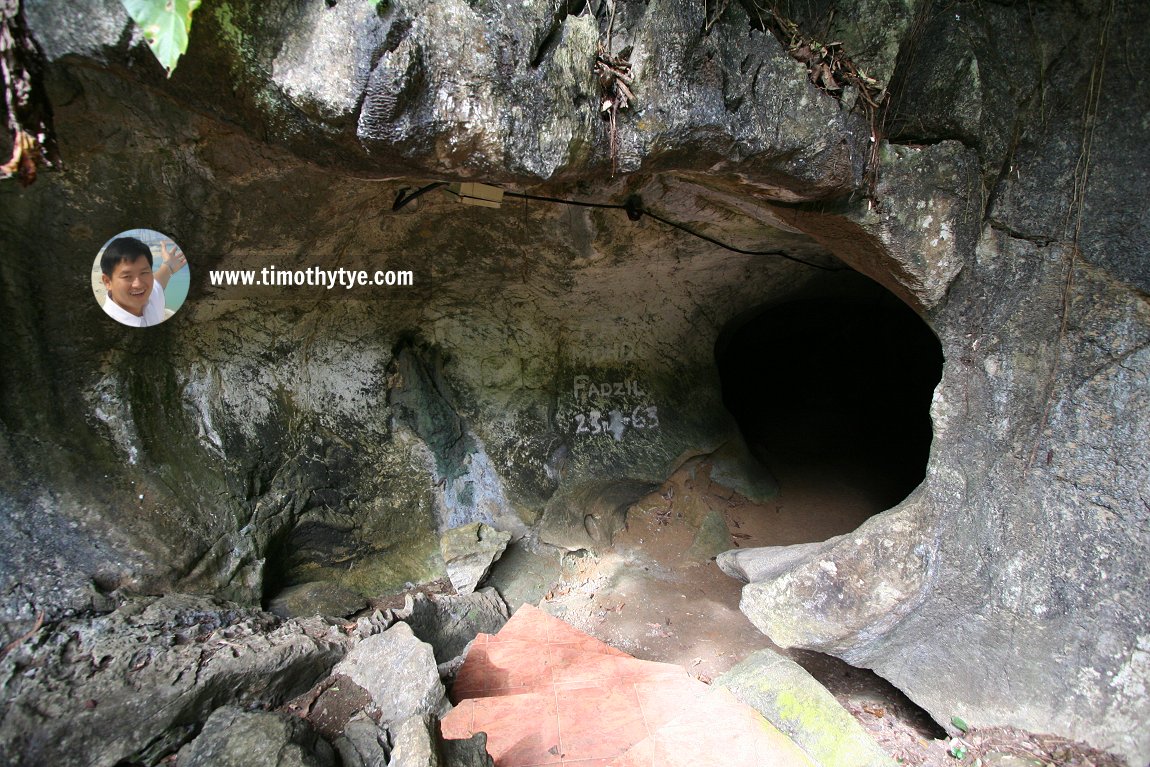 Mouth of Bukit Kayang cave, unfortunately with modern-day graffiti (31 October, 2009)
Mouth of Bukit Kayang cave, unfortunately with modern-day graffiti (31 October, 2009)
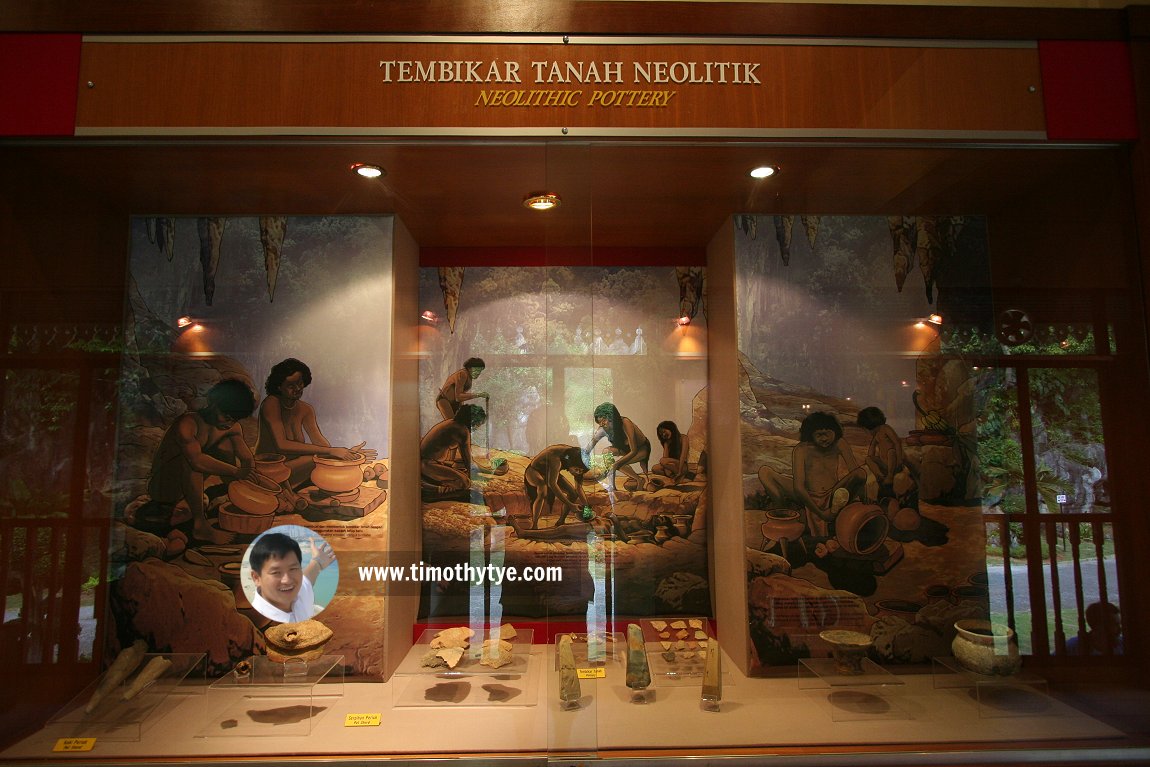 A display of Neolithic pottery at Muzium Kota Kayang (31 October, 2009)
A display of Neolithic pottery at Muzium Kota Kayang (31 October, 2009)
 Prehistoric stone axe (31 October, 2009)
Prehistoric stone axe (31 October, 2009)
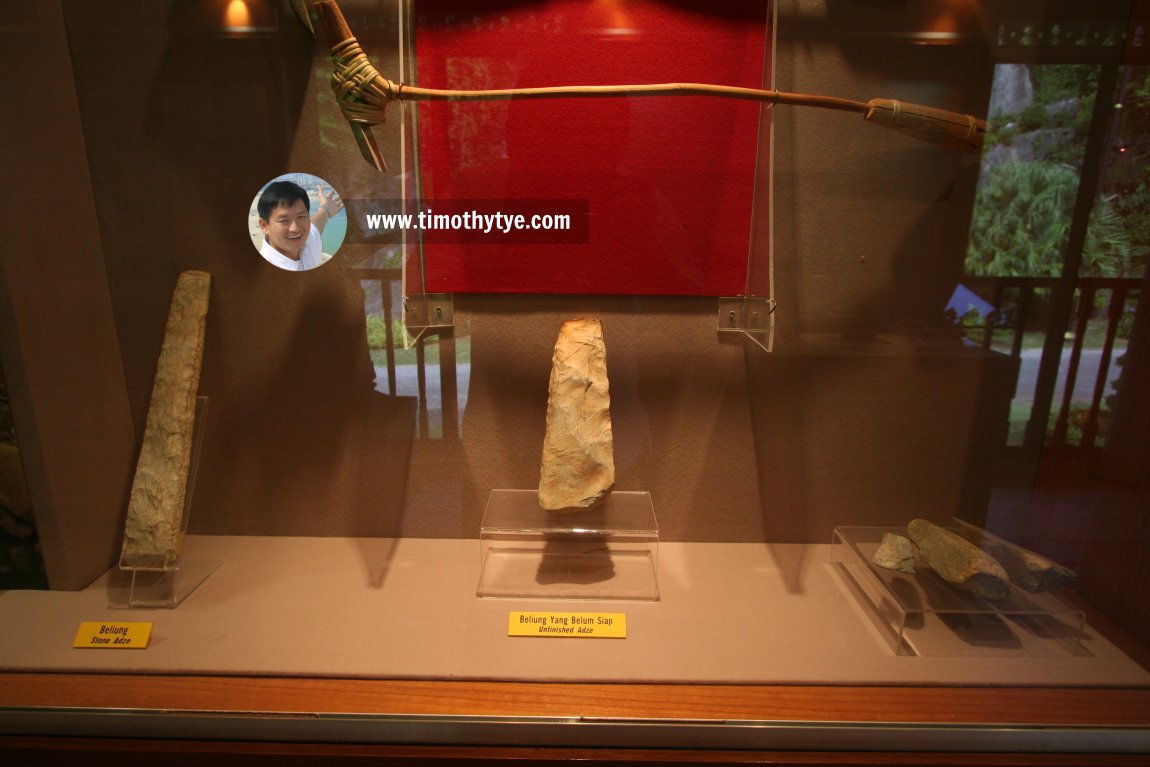 Prehistoric stone adzes discovered in Perlis (31 October, 2009)
Prehistoric stone adzes discovered in Perlis (31 October, 2009)
From the limestone caves at various sites in Perlis, archaeologists have uncovered evidences of Hoabinhian culture, which takes its name from Hòa Bình in Vietnam. Characteristic of the Hoabinhian culture was the practise of burying the dead in a foetal position, with the dead person's knees folded to the chin. Often the skeletal remains were covered with stone slabs, with a stone pillow resting the head. Evidences of this was uncovered at Bukit Ngulang, Gua Tok Janggut, Gua Bintong and Wang Tangga, among others.
In addition to prehistoric discoveries, the museum also exhibits finds from the proto-history period. In the context of Perlis, this is from the end of the prehistoric period right up to the early 15th century, just before the start of the Malacca Sultanate. Archaeological research on this period was conducted by I.H.N. Evans and H.D. Collings, who reported the discovery of Hindu religious artefacts in various places in Perlis including Gua Berhala, Bintong and Gua Kurung Batang.
Among the artefacts from this period include clay tablets imprinted with the bodhisattva Avalokiteśvara. This points to the presence of Mahayana Buddhism in the proto-history period. By studying the type of script on these artefacts, and comparing them with those found in the Bujang Valley, in Gua Chawas of Kelantan and parts of South Thailand, the archaeologists were able to determine that these date from between the 10th to the 12th centuries.
 Imprinted clay tablets (31 October, 2009)
Imprinted clay tablets (31 October, 2009)
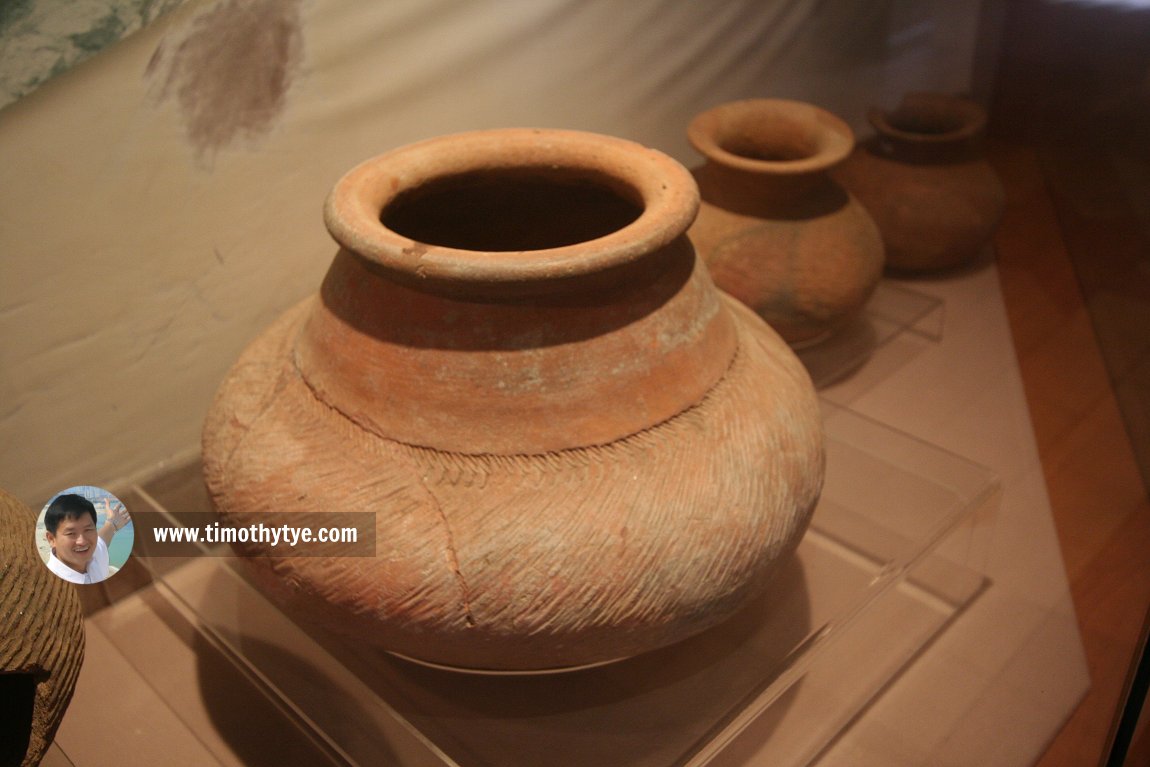 Ancient claypots at Muzium Kota Kayang (31 October, 2009)
Ancient claypots at Muzium Kota Kayang (31 October, 2009)
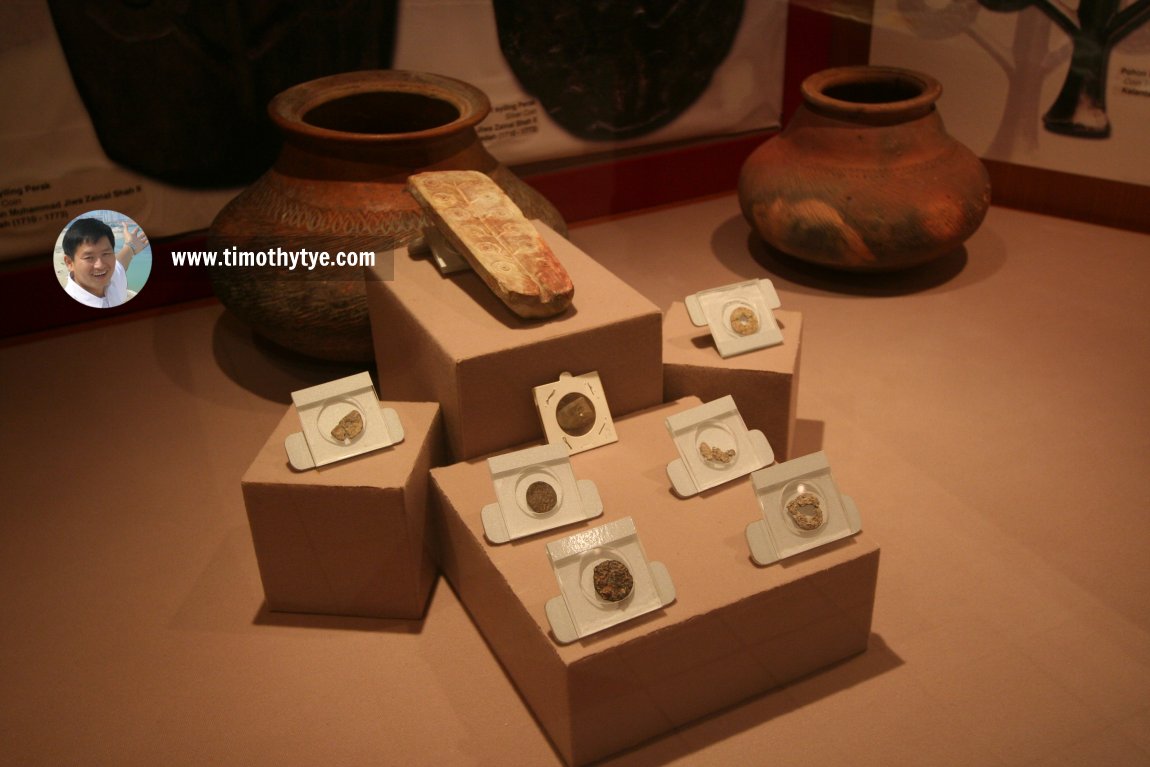 Ancient coins (31 October, 2009)
Ancient coins (31 October, 2009)
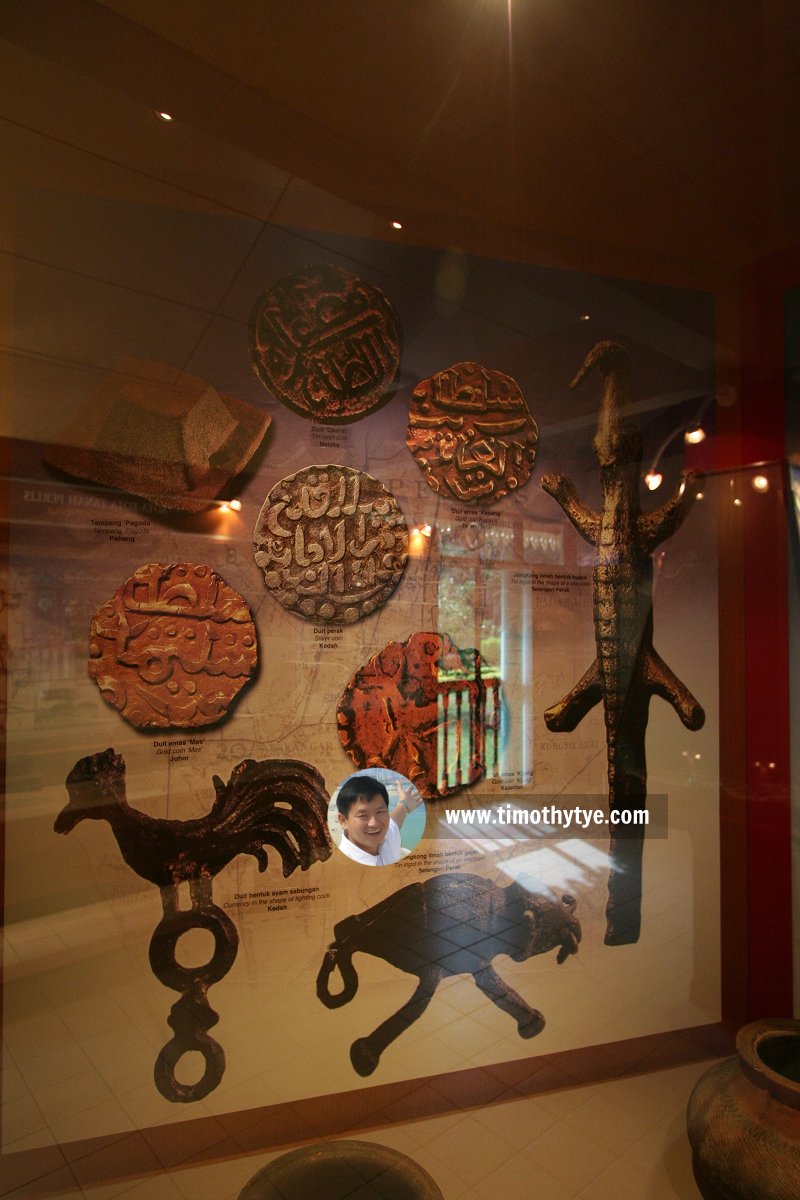 Interpretation of ancient money (31 October, 2009)
Interpretation of ancient money (31 October, 2009)
 Money tree, Muzium Kota Kayang (31 October, 2009)
Money tree, Muzium Kota Kayang (31 October, 2009)
More recent artefacts discovered in Perlis include Chinese pottery shards. These are dated to the late 19th century, during the Qing Dynasty.
 Qing Dynasty pottery shards (31 October, 2009)
Qing Dynasty pottery shards (31 October, 2009)
Moving towards more modern times, the museum displays brassware and basketware that were once commonly in use in Perlis.
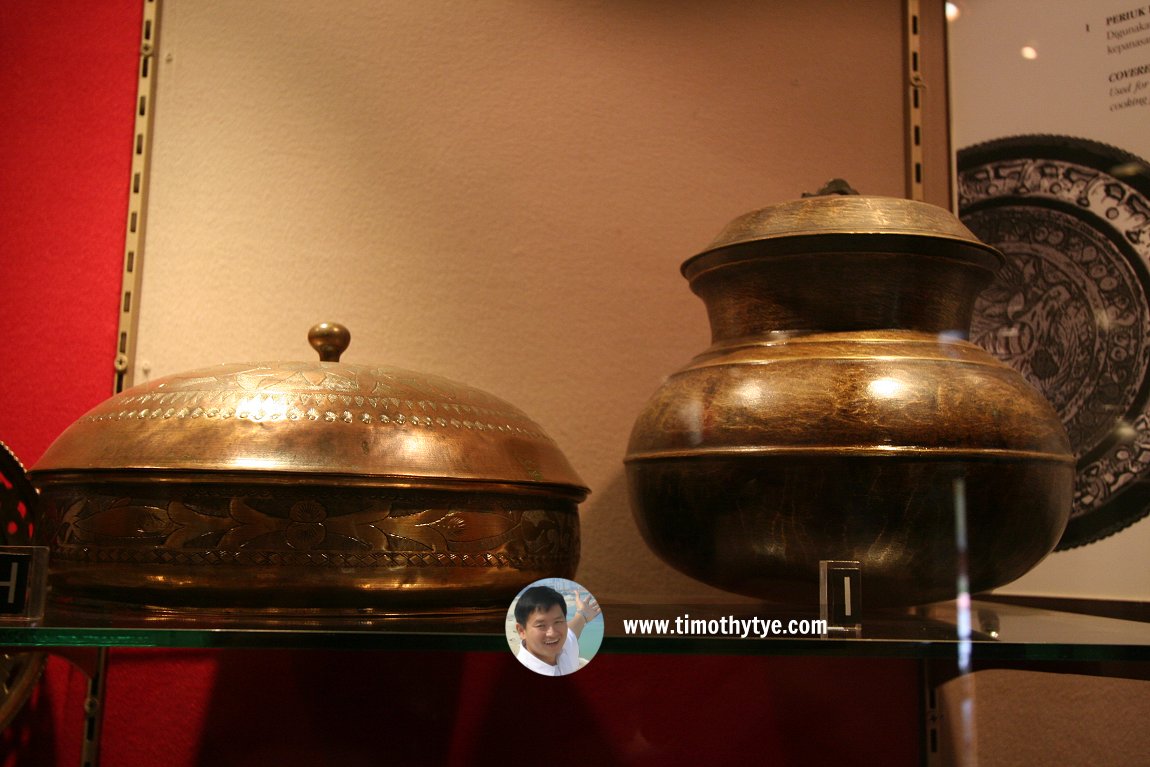 Brassware, Muzium Kota Kayang (31 October, 2009)
Brassware, Muzium Kota Kayang (31 October, 2009)
 Brasspot, Muzium Kota Kayang (31 October, 2009)
Brasspot, Muzium Kota Kayang (31 October, 2009)
 Ancient artefacts at Muzium Kota Kayang. (31 October, 2009)
Ancient artefacts at Muzium Kota Kayang. (31 October, 2009)
360° View of Muzium Kota Kayang on Google Maps Street View
Muzium Kota Kayang (Nov 2018)Muzium Kota Kayang is  on the Map of Kuala Perlis
on the Map of Kuala Perlis
List of Museums in Kuala Perlis, Museums in Perlis and Museums in Malaysia
 Latest updates on Penang Travel Tips
Latest updates on Penang Travel Tips
 Map of Roads in Penang
Map of Roads in Penang
Looking for information on Penang? Use this Map of Roads in Penang to zoom in on information about Penang, brought to you road by road.Disclaimer
Please use the information on this page as guidance only. The author endeavours to update the information on this page from time to time, but regrets any inaccuracies if there be any.
Copyright © 2003-2025 Timothy Tye. All Rights Reserved.

 Go Back
Go Back